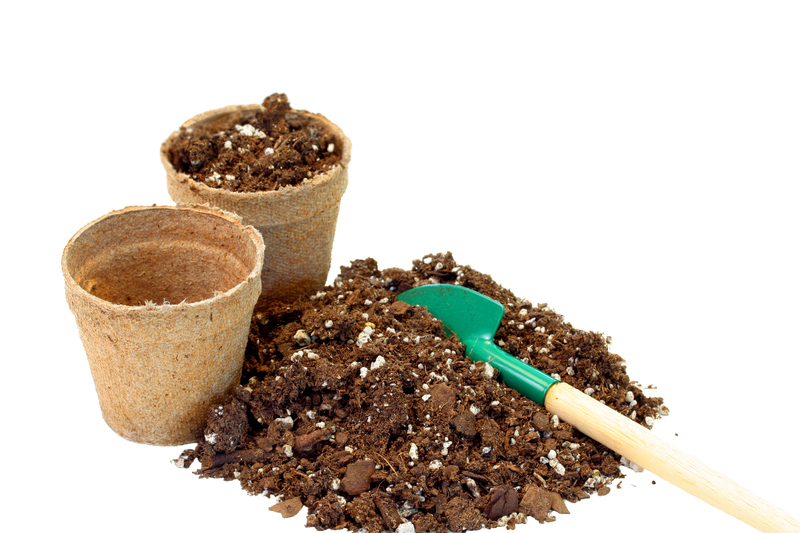Turning Back the Climate Clock with Gardening
Posted on 03/07/2025
Turning Back the Climate Clock with Gardening: An In-Depth Guide
Climate change is one of the most critical global challenges of our era, prompting urgent calls for innovative solutions that empower individuals and communities. Among the rising stars in the climate-action toolkit is a timeless practice: gardening. This article explores how turning back the climate clock with gardening is both possible and practical, revealing how everyone--from urban dwellers to rural residents--can contribute to unlocking a more sustainable future.
Understanding the Climate Crisis: The Role of Everyday Actions
The climate clock represents the metaphorical countdown towards irreversible climate change. Scientists emphasize we have limited time to reduce greenhouse gas emissions before hitting crucial tipping points. While governmental policies and corporate reforms are essential, individual action--especially through gardening--can help slow the progression of global warming.
- Gardening restores depleted soils, locking away more carbon from the atmosphere.
- It creates microclimates that cool urban and suburban environments.
- Native plant gardening supports biodiversity, which strengthens ecosystem resilience.
- Gardens absorb rainwater, mitigating flooding and reducing pressure on stormwater systems.

How Gardening Reverses Climate Change
The Science of Carbon Sequestration in Your Backyard
One of the most powerful mechanisms for turning back the climate clock with gardening lies in carbon sequestration. Plants absorb carbon dioxide--one of the primary greenhouse gases--during photosynthesis, locking carbon into leaves, stems, roots, and the soil.
- Trees sequester vast amounts of carbon; a single mature tree can absorb up to 48 pounds of CO2 each year.
- Grasslands and perennial gardens store carbon below ground in roots and soil microbes.
- Composting organic waste in your garden prevents methane formation in landfills and returns nutrients to the earth.
- Mulching locks in carbon, reduces soil erosion, and promotes healthy root systems.
By focusing on soil health, gardeners can boost their climate change reversal impact. Healthy soils are living ecosystems teeming with fungi, bacteria, and insects that further improve carbon retention.
The Benefits of Urban Gardening for the Climate Clock
City-dwellers may think they have little opportunity to affect the planet's climate. Yet, urban gardening--including rooftop gardens, balcony planters, and community garden plots--offers robust benefits.
- Rooftop gardens reduce the "urban heat island" effect, cooling cities and reducing reliance on energy-intensive air conditioning.
- Vertical and container gardens maximize green space, even in tiny apartments.
- Local food gardening slashes the carbon footprint of food transported from afar.
- Planting trees and shrubs along streets improves air quality and provides shade.
Community Gardening: Multiplying the Impact
Community-led garden projects harness the collective energy and skills of neighborhoods to maximize environmental impact. From school gardens to urban farms, these initiatives promote food security and environmental education while directly combating climate change.
Climate-Resilient Gardening Practices
For gardening to effectively help restore the climate clock, certain "climate-smart" techniques are recommended:
- Grow native and drought-tolerant plants that are adapted to local climate conditions, thus requiring less water and fewer inputs.
- Implement permaculture principles such as companion planting and layered gardening to increase yields and ecosystem health.
- Follow "no-dig" or "minimal-till" gardening to preserve soil structure and beneficial microorganisms.
- Cycle organic matter by composting garden and kitchen waste instead of sending it to landfill.
Maximizing Your Garden's Climate Impact
1. Design with Purpose
*Strategically* position trees to provide shade in summer and windbreaks in winter, reducing household energy use. Use groundcovers and mulches to prevent soil erosion and water evaporation.
2. Prioritize Biodiversity
The greater the variety of plants and habitats in your garden, the more robust your local ecosystem becomes. Diverse gardens draw in pollinators, birds, beneficial insects, and microorganisms--all crucial for climate resilience.
3. Integrate Edible Gardens
Growing your own fruits, vegetables, and herbs helps reduce your carbon footprint by limiting reliance on food that's trucked in from miles or continents away. Even small containers or raised-beds can make a difference.
- Start with easy crops like salad greens, tomatoes, and herbs.
- Join a seed-saving exchange to increase genetic diversity and adapt plants to your local area.
- Share your harvest with neighbors, supporting a sustainable, interconnected community.
Innovative Gardening Methods for Carbon Drawdown
Regenerative Gardening
Regenerative gardening takes carbon-capture to the next level. It focuses not just on sustaining the environment, but actively restoring it. Techniques include:
- Cover cropping with legumes and grasses to enrich soil and prevent erosion.
- Agroforestry: integrating trees and shrubs into vegetable gardens.
- Managed grazing of small livestock, such as chickens, to enhance soil fertility.
- Interplanting diverse species to improve pest resistance and minimize chemical inputs.
Forest Gardening: A Vision for the Future
Forest gardens, inspired by natural woodlands, layer plants of different heights and root depths. Not only do they sequester more carbon, but they also build resilient food systems that require less maintenance and input over time.
Gardening for Climate Advocacy and Education
Turning back the climate clock with gardening is not only about hands-on ecological management; it's also about advocacy and education. Gardens can become classroom spaces for neighbors and youth, teaching critical concepts like:
- Climate science fundamentals
- Healthy eating and cooking with local produce
- Biodiversity's role in resilience
- Water conservation techniques
Hosting garden tours, workshops, or open days can inspire others to see the power of small-scale climate action.
Common Questions about Gardening and Climate Change
Is gardening truly effective in stopping climate change?
While gardening alone cannot halt global warming, the collective impact of millions of home, school, and community gardens can move the needle toward carbon drawdown, improved biodiversity, and healthier microclimates. When paired with broader policy shifts and clean energy adoption, gardening is a vital part of the solution.
What plants are best for carbon sequestration?
Fast-growing trees (like poplar and willow), deep-rooted grasses, clovers, perennial vegetables, and cover crops are among the best. However, the most effective choices tend to be native species adapted to your local climate and soil conditions.
Does watering my garden add to climate change?
Water should be used efficiently. Rainwater harvesting, drip irrigation, graywater reuse, and mulching all ensure your garden is eco-friendly. Avoid over-watering and swap thirsty lawns for hardy, drought-tolerant plants.

Simple Steps: How You Can Turn Back the Climate Clock with Your Garden
Ready to get started? Here's a step-by-step guide to maximizing your climate impact through gardening:
- Plan your garden according to your local environment. Research native species and drought-tolerant varieties.
- Build soil health using compost, mulch, and cover crops.
- Add perennials and trees for long-term carbon storage.
- Install water-saving features like barrels and drip irrigation.
- Tend your garden organically--eschew synthetic chemicals and fertilizers.
- Share knowledge and plants with your community.
Each small action, multiplied by millions, can help restore our climate for future generations.
The Future of Climate Action Is Green
In a rapidly changing world, gardening stands out as an accessible, affordable, and pleasurable way to reverse environmental damage. By turning back the climate clock with gardening, we nurture hope: hope for abundant food, flourishing ecosystems, and a planet in balance. Whether on a windowsill or a sprawling field, every garden can be a force against climate change.
Now is the time to pick up your trowel, embrace the soil, and plant the seeds of a cooler, greener, and more resilient world. Let your garden be a living testament to positive action, proving that no contribution is too small in the race to heal our climate.



